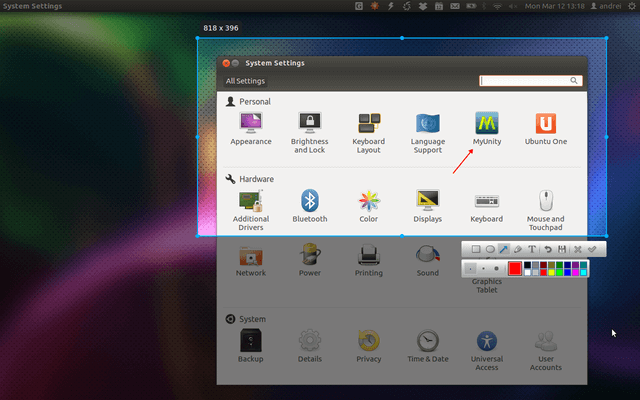

here is an example command capturing a screenshot of and saving the file as firefox-ss1.png in the current directory. You can use the which command to find the location of the Firefox executable just like we did above. NOTE: If you omit the filename the file will be saved in the current working directory as screenshot.png. The basic syntax for take a screenshot with Firefox from the command line is: -screenshot "path/to/save/filename.png" ""
#Linux screen grabber full
The other advantage of using Firefox over Chrome, is that Firefox takes a screenshot of the full web page by default. Firefox includes a handy -screenshot option that automatically puts you in headless mode. Taking a screenshot with Firefox from the command is very straight forward. Byzanz Byzanz is a simple tool to record a running X desktop as animated GIF. Taking Screenshots with Firefox from the Linux Command Line See the Links and Resources section below for a complete list of command line options. You can use them to get the exact screenshot you want. There are a lot of command line options when using Chrome or Chromium. Gentoo does not come with a default GUI so there is no such thing as a generic Gentoo screenshot. Here is a sample screenshot taken with the above command. Now that we have the location, we simply run chrome with some options like so: /usr/bin/google-chrome -headless -screenshot="/home/mcherisi/chrome-ss1.png" ""

We can do this by using the which command like so: ~]$ which google-chrome The first step is to find the location of the google-chrome executable. NOTE: If you are using Chromium simply replace google-chrome with chromium-browser in the following commands. Here is the basic syntax of the command: -headless -screenshot="" "" Taking a screenshot of a URL in Google Chrome from the command line is fairly easy. ScreenRec is a user-friendly screen recording app for Linux that is pretty efficient and lightweight. Taking Screenshots with Google Chrome / Chromium from Linux Command Line During headless operation, the browser will not attempt to create a window because it assumes there is no GUI. The term "headless" or "headless mode" basically means using a system or application that does not have a monitor or graphical user interface (GUI). This can come in handy when creating scripts that take screenshots of a URL without user interaction as well as loading metadata (e.g. This image is also saved directly to the images folder.Both Google Chrome and Firefox have the ability to take screenshots from the Linux command line.

#Linux screen grabber free
You will find it on a conventional keyboard in the upper row, next to the key. The next open-source screen recording on the list is AceThinker Free Screen Recorder. This is - depending on your keyboard - labeled with the word “Print”, “Print Screen” or “PrtSc”. The crucial key to take screenshots in Linux is the key.


 0 kommentar(er)
0 kommentar(er)
